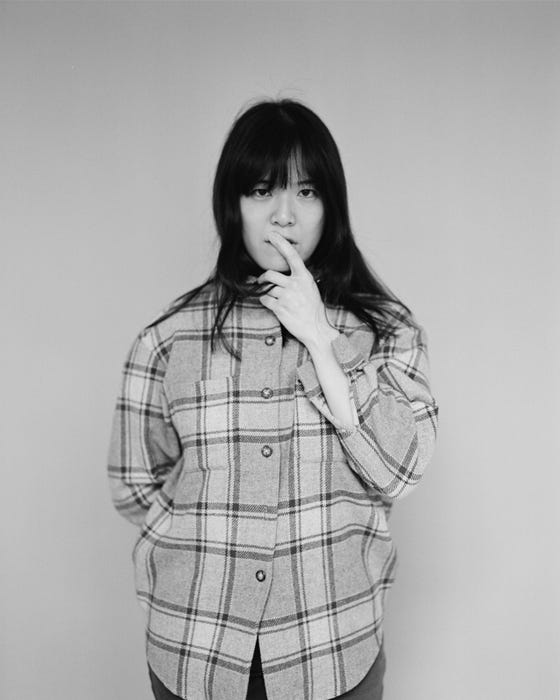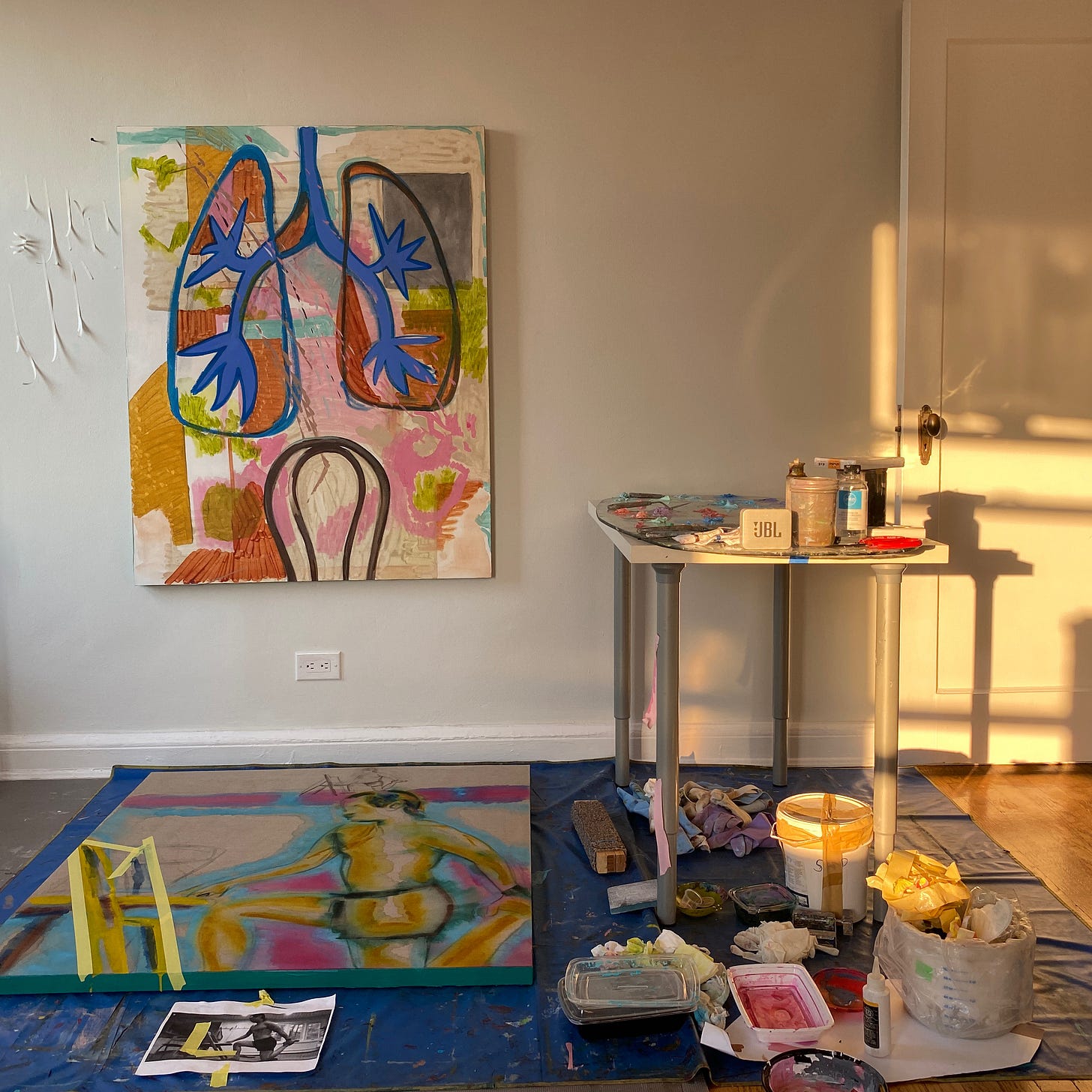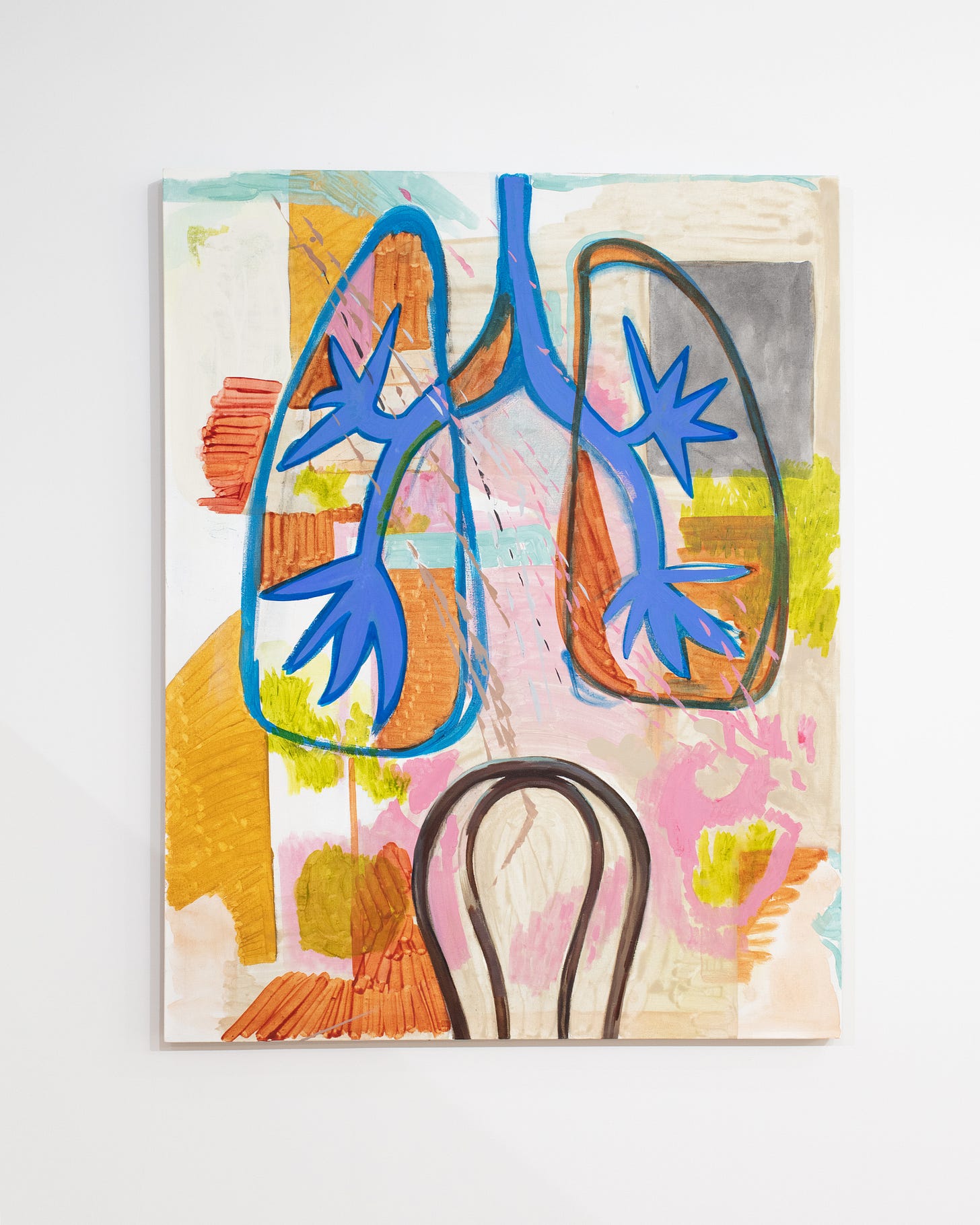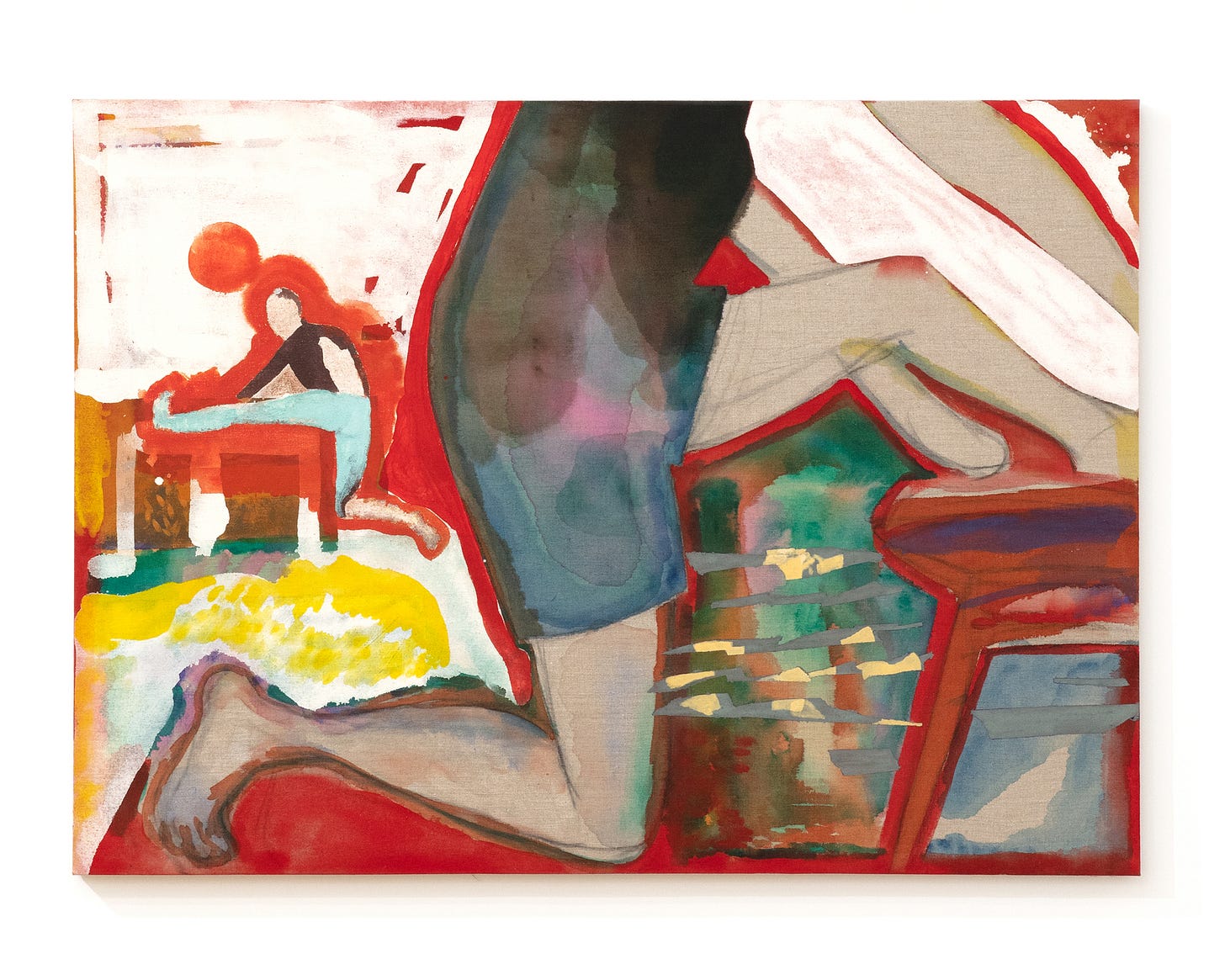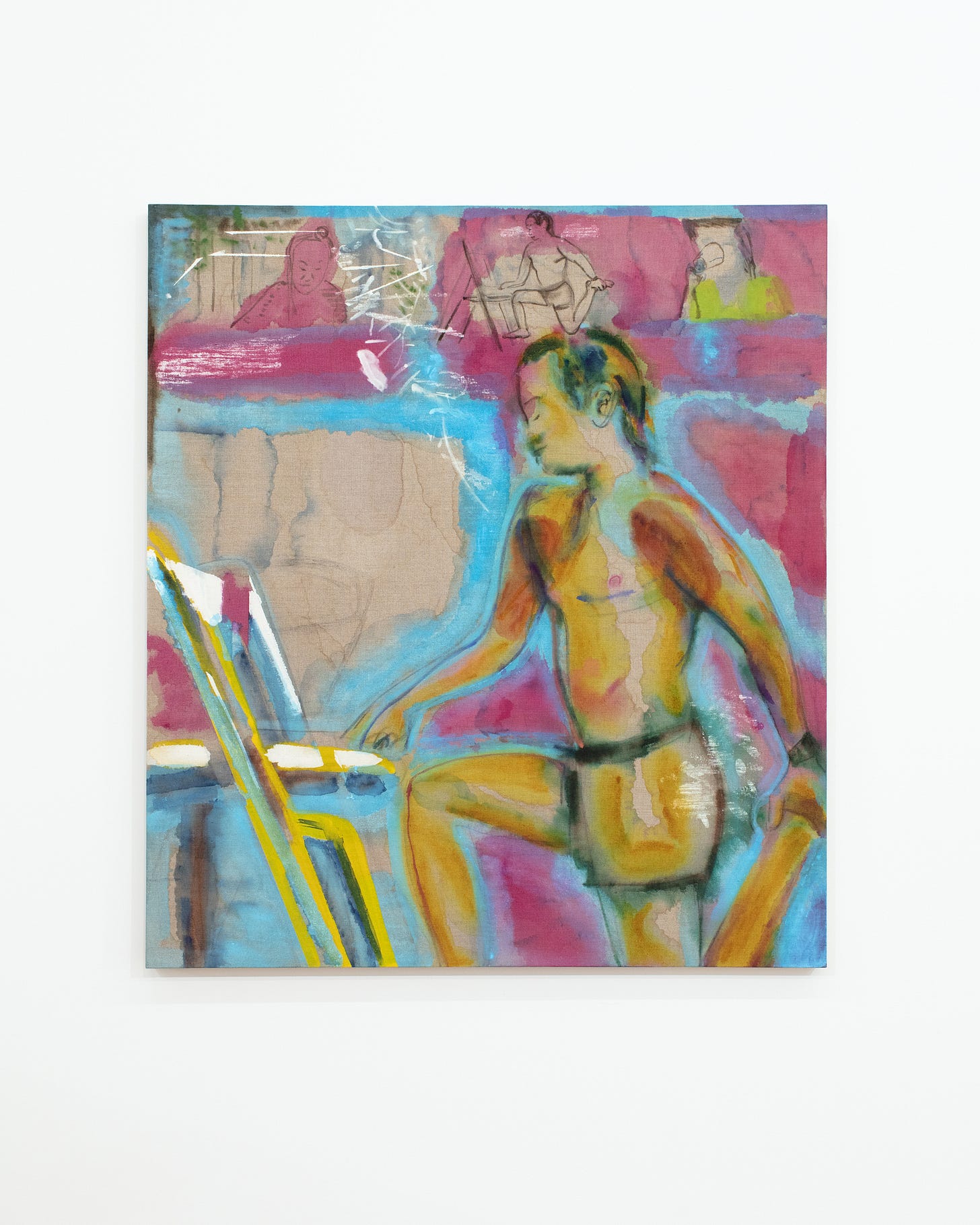Jamie Chan in conversation with Olivian Cha
Olivian Cha is a librarian, curator and writer based in Los Angeles. She has held research and curatorial positions at the Museum of Contemporary Art, the Los Angeles County Museum of Art, the Getty Research Institute and previously served as an Arts Librarian at the Los Angeles Central Library. She is currently the curator of the Corita Art Center in Los Angeles. She has written for publications such as Frieze, Flash Art, and Artforum.
Jamie Chan, born in 1984, received an MFA in painting from Bard College in Annandale-on-Hudson in 2013. The artist received a BFA from UCLA in Los Angeles, California in 2006.
Exhibitions showing Chan’s work have taken place at: Tif Sigfrids Gallery, in both Athens, Georgia and New York City; Ceysson et Bénétière in New York City; in an installation by Nancy Shaver at the Museum of Contemporary Art in Los Angeles, California; and in various project spaces across New York City and Los Angeles, California.
In 2018, Chan coauthored a 4Columns review (linked below) regarding an exhibition of paintings shown inside a mall in Chinatown in New York City. The artist’s writing has also appeared in the collection This Long Century.
She recently had a solo exhibition at Dunes.
Olivian Cha
How is your new apartment?
Jamie Chan
I'm stressed out about my mom coming to visit. I'm sitting on this couch. It's new, this new little tiny couch. It's really small. The studio has its own room now but I'm used to living in my studio. So even though now I have a door that I could close, I still need to create this chaos everywhere. So that's just how it is. I have a lot of old work out right now.
Olivian
I was just looking at the paintings this morning, and I was really thinking about how much your apartment seeped into your work.
Jamie
Yeah for this show at Dunes(.fyi) actually, I made four new paintings. And that was in a very short time period, like a month. It was great to have the deadline forcing me to figure out how to make work in this space. And as you said, the way in which painting can convey a sense of scale. Between the painter and their space. There are a lot of tells in all painting about how it was made. But in particular around the amount of like, relaxing that the gaze can do, or this sort of living in the gaze towards the painting. I don't have great language to describe that. Besides brushing your teeth, looking at your painting, or going to sleep and looking at it in the dark.
I think the tell about how they're made there is that the colors are somewhat limited. Because I didn't go buy new paint, or plan in advance about the palette. That much was visceral and immediate. I used what I had, going back to these bright pastel colors that I always keep around, a very elemental kind of baby blue. And Princess pink.
Olivian
Yeah, I love those colors. You living in a bigger apartment allowed for your paintings to have more space. Brushing your teeth in front of your painting- you probably don't have to do that now. Whereas in your previous apartment, you didn't have a choice.
Jamie
I do think there's more space materially, just because there's a lot more raw canvas. There was a lot of material that was left un-manipulated. In the work I've made in the last 10 years, I've really obsessed over the surface of it, and tried to engage and COVER every part of the surface to make it READ. I think in these newer paintings in the Dunes show, there's very diluted paint that has very little pigment.
Olivian
I can feel that intuitively. It seems like that's built into the show, that you actually quit your job to do this compression of professional life and painting and your tiny apartment. I want to talk about the technique you’re using in ‘offering by Grayson’ which is such a compelling image.
Jamie
The canvas is unprimed. Acrylic and watercolor and ink bleeds and absorbs into the substrate which is linen. It's like just getting coffee on your clothes or something.
Olivian
It's a stain, yeah. This kind of doubling of the figure…I don't know Grayson, is that somebody I should know…
Jamie
it’s a friend from grad school with who I reconnected with in the pandemic, because they were doing a zoom workout with a group of friends. For a while it was my main social time, doing a workout with this group online. Portraying Grayson was sensitive and I asked for their consent to show the work. They're recognizable more than any other figures I’ve painted, they're trans and I think there's a bit of attention around their scar. It’s not super legible, but it is. They’re Korean American. It's the first time I've ever painted somebody I identify with as Asian American. I think in the past, all the figures I've painted have been more symbolic. Just filling certain archetypes, iconic, where it does’t matter who they are, or that becomes part of the subject.
Olivian
When do you know the work is finished? It’s a cliche question but seems particularly relevant in your case, because you leave so much of what could be read as a “study” in the paintings? Anything with Grayson, who is trans and you were talking about the scar, how that could easily be just read as like, oh, that's just Jamie doing the background study of the body. But that's not what it is, it can be read as that. The finished or the unfinished in your work as a kind of, you know, metaphor for gender. That's something that's new, in your work.
Jamie
I think it was ultimately a conscious decision to not render Grayson's body in a more illustrative way that would be centered on trans identity. It was important to center the feeling of process.
Olivian
That makes sense. Exercises. As soon as you start, you're just thinking about the finish line, but then it's just starts back over again. Very cyclical.
Jamie
Yeah, it's a discipline. I guess it's a nod to what we do, living. That part of what finishes the work, the cyclical aspect, is also this acknowledgement that we do that we have to do this. To stay alive.
And I guess there's a little bit of a performance around that finish, but not finesse.
As opposed to work where the finish is like a, like a, squiggly line, a perfect, squiggly line. Patricia Trieb or Alex Katz are examples whose work feels so finessed, without any threads hanging down.
Jamie
Painting is a lot about looking at other people's work and figuring out what YOU want it to be more of.
Olivian
Like, constantly putting yourself within that whole history and spectrum, responding to the landscape of painting. Yeah.
Jamie
Responding productively, I guess.
Olivian
This idea of like being finished, I'm curious whether for you this idea of something being totally resolved is something that you're very suspicious towards.
Jamie
I’m suspicious of endings but it does make finishing a painting pretty arduous. There's a lot of hand wringing around that for me, which I don't love. I think there are a lot of painters out there who just like slide down the mountain, and then they're just like, whooooo.
Olivian
I can see the hand wringing. The earlier works from like 2018 and the ones that you've made in your old apartment, you've been working on them for far longer than the date that's stamped on the painting.
Jamie
I like to go back into paintings that have been finished, years later.
Olivian I haven’t seen the show in person but a lot of these figures are embedded in my memory. I just remember the dog, or a certain pose, which I wanted to ask you about- the stretching pose, this funny kneeling pose, I feel like it's been in your work forever. For some reason, I equate domestic stretching with Asians. My mom would just always do that when I was growing up, just be in the living room doing weird things that she would call exercise, when it was just me there. Very sensual and strange.
Jamie
I mean, there's also the Cerberus in this show, more overt because you can look right into its butthole. And that was the way I found it, on a ceramic plate from somewhere in Italy, In the collection of the Met. And so with the squatting and the bent over and kneeling and stretching…I looked at a lot of Degas paintings throughout my life. At some point it broke through for me - the nonnarrative postures of ballerinas and that point in modernism, affected by photography. There's all this weird cropping and extreme points of view, lens distortion. This combination of ideas while creating images of women really had a strong impact on me both in terms of art, but also personally. Eric our friend is big baseball fan and we went to a game, and that opened up my understanding around baseball. He got me to see baseball is like ballet just because there's so much about these very critical moments where there's a lot of action. And of course the photography of it.
Olivian
I think seeing the images, one will have the immediate impulse to sexualize the imagery, and not necessarily like pathologizing it in a way though I'm sure one could, but I feel like what you're actually describing as an open way of understanding the body in a still very sensual way. There's also this kind of impotence, harmlessness about it, there’s a hand holding a palette, there's a whatever, phallus, and a hole, but they don't seem quite threatening, but they're sort of on the precipice of something else that's childlike and playful. The way that I understand the body as a mother who's like watching this child grow, as you’re cleaning this baby's asshole for the 100th time. These parts of the body become intimate and real but in this different way. I feel like painting is a space where you can kind of really explore notions and representations of the body in certain very, like loaded iconography without the most obvious, like, Oh, this is about like, fucking asses.
Jamie
Yeah, I would say that there's not really overt sexual reference in the paintings, but curiosity and looking at things for shapes and and when you're surprised by vulnerability, that's misplaced. The crouching thing…there are people that are in compromised positions. Painting at this time has a lot of performing narratives, there’s the need for really strong images, positive identification. It’s tiresome after a while. Feels more real to me to use the body and identity for more playful exploration and less conceptual idea of bodies.
Olivian
Thinking of Doris, my baby, there never is total freedom, it's just the process of her learning, she is a social being. Privacy and boundaries are immediately asserted, usually as moments that are very strongly tied to the body. Like “sorry, I'm taking a sh*t you can't just walk in”, and she knows it is like this.
I think there's something maternal in your paintings.
Jamie
It's come up for me before. Women painters can't avoid being aware of the tension between being a mother and an artist, that limitless creativity meets up with limited resources. Also feeling that what you create is like a birthing process, so that it can be hard to let go.
Olivian
Your press release talks about the sort of conflict, the between, trying to be a working professional, and also being a full time painter, with you trying to open up that space of antagonism so that it's more generative. …There's this really great essay by Ursula Le Guin about writing and motherhood. … I just felt like you've sort of thrived.
Jamie
It was very hard to do a show with the job because a show requires an extra burst of energy, and flexibility. You know, depending on the situation, but I think that that was yeah, for many, many years working full time. I mean, as so many people do, you know, like, you do have to really think, selfishly and conserve, and just focus on making your work and not and really, really play down. Like, the professional aspect of being an artist, it can it's, I find, I just think it's, it's, like, it's so much work to just like, do the professional stuff of relationship building and thinking about the, like, reception and sort of like, like, creating language around that.
Olivian
Visual motifs from your job enter into the work and maybe people won't even know what secrets you’ve hidden in the works, the grid in “Death of the Small Self,” like post it notes lined up. I don't know. I love that it's sort of like running directly into the mirror. I don't know what it is. It's a mirror full of post its.
Jamie
I have some amnesia about my show, because I'm not in the same city. I'm surrounded by other work that's very much connected to the show, but I guess I'm feeling that loss, or some kind of grieving around having a show. You have to let go of the feeling of what-it-was-going-to-become.
Olivian
Sounds so maternal Jamie.
Olivian
I wanted to address Asian American identity. I'm very cautious around using racial and ethnic identity as a means into my writing or professional work. So with painting, it’s a question of whether you're going to represent, you know, that figure in the work or not?
Jamie
I have been representing Asian American identity in the work, but just not, you know, in a literal way. Now, with the painting of Grayson, there's something like torsos in South Asian sculpture or the slightly Buddhist expression on the face. That was a nice revelation and I wasn’t trying. But now, I compare it to Kai Althoff paintings that I wrote about, and the availability of these cultural expressions, the meaning that they carry, how they're interpreted. The availability and uses of Asianness in Althoff paintings seemed so tossed off. But now I’m like, Oh, I didn't want to try to represent Asianness.
Olivian
Painting, which is a form of mark making and expression, in relation to cultural stereotypes of Asians not really known for making statements, being loud, as a cultural thing. The value that American or Western European culture places on mark making and saying something, being forceful and that I don't know what that means with painting. But I think those are all really interesting problems for you. How to embody Asianness without having to whatever fit yourself into some notions of what a painter should do, or what painting should do. Making resistance to what you were saying about really affirming representations of cultural identity.
Olivian
If you go to Korea, everybody is so just about like, being Korean. And stating their Koreanness and being so proud of their nationality and being so loud about it and that’s, you know, contemporary Korean culture.
Jamie
Let's say Asian American identity and Asianness and centering on that is just an American thing. Yeah. Because it's political here. Asian American was a term that was in order to that was created in order to unify Asians here to have a block of shared interests among Asian people. So it's in the model of black power, as something to organize under. So I think Asian American is very politicized. It is important to distinguish it from the national identities which function differently.
Jamie
What is the painting behind you?
Olivian
It's a photograph of Corita in her bathroom? It's very Felix Gonzalez Torres.
Olivian Cha received both her Master of Library and Information Science and Master of Art in art history from the University of California Los Angeles. She has held research and curatorial positions at the Museum of Contemporary Art, the Los Angeles County Museum of Art, the Getty Research Institute and previously served as an Arts Librarian at the Los Angeles Central Library. She is also an independent curator and occasional art critic contributing reviews, interviews, and features for publications such as Frieze, Flash Art, and Artforum.
Jamie Chan, born in 1984, received an MFA in painting from Bard College in Annandale-on-Hudson in 2013. The artist received a BFA from UCLA in Los Angeles, California in 2006.
Exhibitions showing Chan’s work have taken place at: Tif Sigfrids Gallery, in both Athens, Georgia and New York City; Ceysson et Bénétière in New York City; in an installation by Nancy Shaver at the Museum of Contemporary Art in Los Angeles, California; and in various project spaces across New York City and Los Angeles, California.
In 2018, Chan coauthored a 4Columns review (linked below) regarding an exhibition of paintings shown inside a mall in Chinatown in New York City. The artist’s writing has also appeared in the collection This Long Century.
She recently had a solo exhibition at Dunes.



